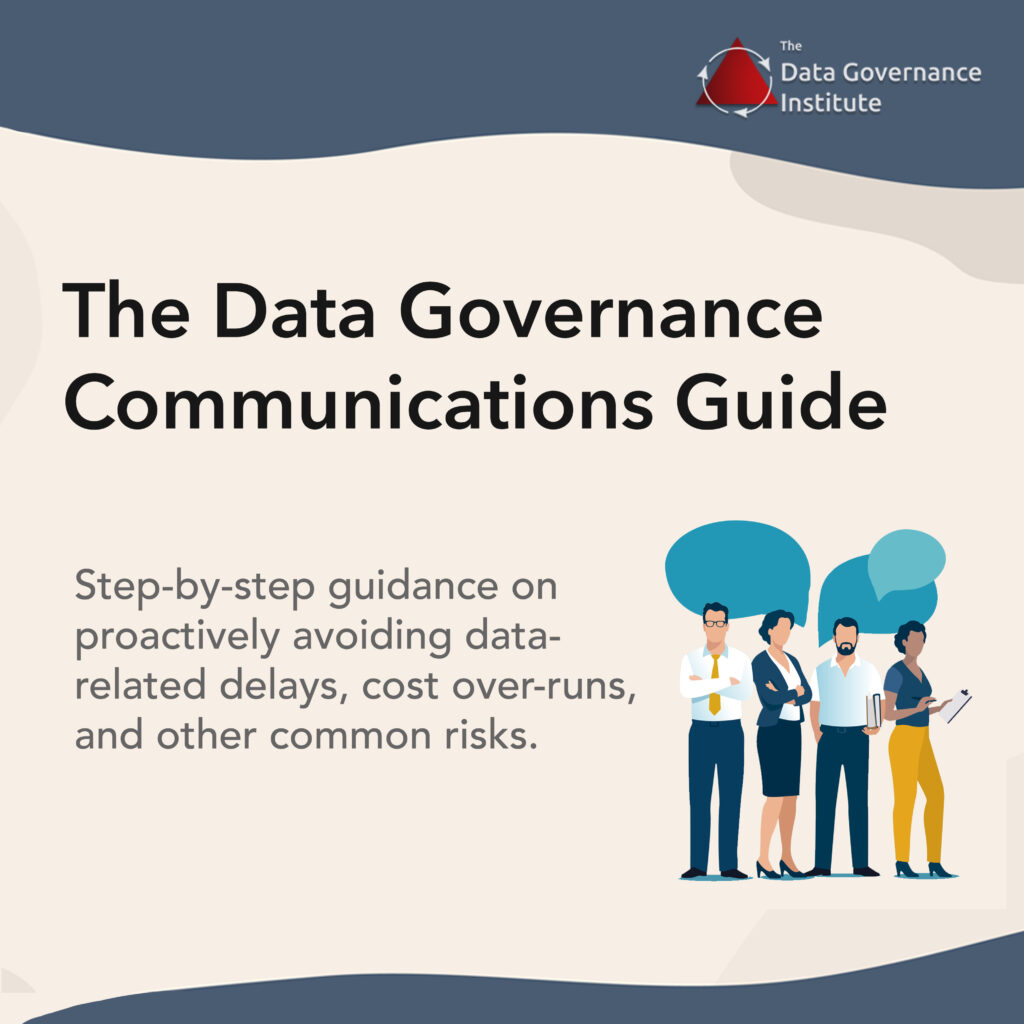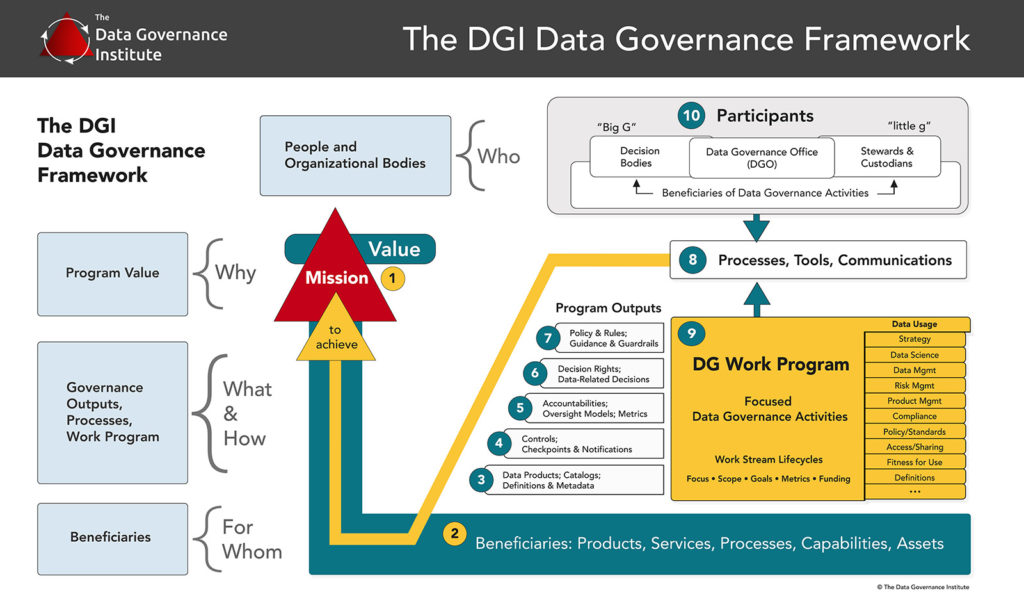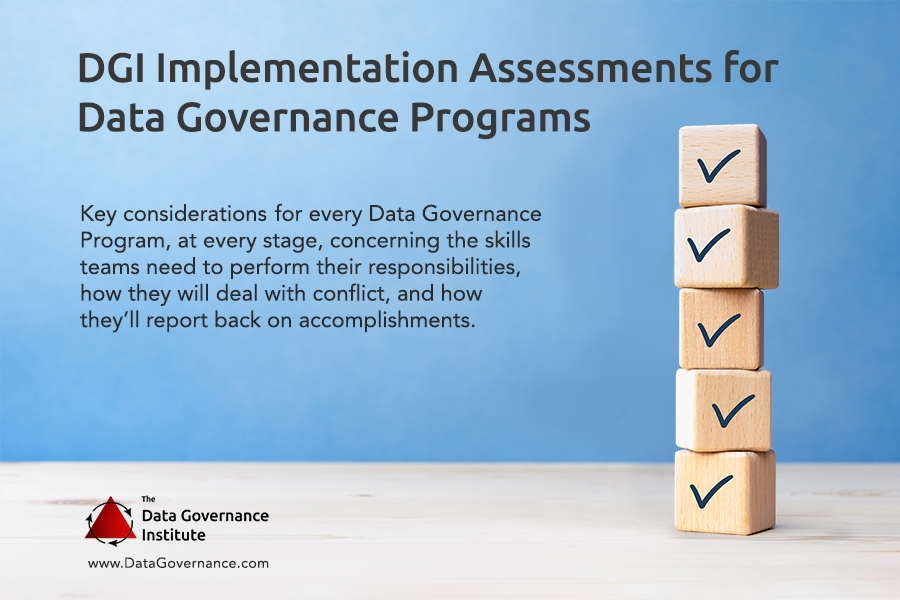Framework Component #6: Decision Rights
Before any rule is created or any data-related decision is made, a prior decision must be addressed: who gets to make the decision, and when, and using what criteria? It is often the responsibility of the Data Governance program to facilitate, document, store, and make available WHO made WHAT decisions, and when.

Decision rights for compliance-related decisions are often simple to define. The decision about WHETHER to comply with a law, regulation, or standard may be made at the organization’s executive level. On the other hand, HOW to comply may require discussion of options by multiple stakeholders.
For other types of decisions, the establishment of appropriate decision rights starts by identifying products, services, and assets affected by the decision, and then identifying representatives to advocate for them.
Often, one of the easiest-to-see benefits of a Data Governance program are the outputs of decision-making analysis. Stakeholder mapping that is done by a DGO as preparation for a key decision may have value to others in the organization. This work may identify a defacto group that can be transformed into a standing group, with little extra effort. The advisors that are brought to the table by decision-makers may be key resources who can mentor data stewards and custodians.
Furthermore, the ability to view who was involved (or not) in a key decision may help your organization decide whether a decision was based on the right set of decision criteria, with the right set of context, and in accordance with the right interpretations of strategy and priorities.
Here’s another way of thinking about decision rights:
- Management is easy to visualize: it’s represented by the functions and names in the boxes of org charts, where the incumbents of those boxes are empowered to make trickle-down decisions, within the depth and breadth of their assigned control.
- Governance is harder to visualize. It takes place in the white spaces in the org chart by decision bodies that convene to represent their boxes and their priorities and their programs, while addressing issues and making decisions that flow across the chart, affecting many. Assembling those conventions of decision-makers is difficult; documenting them for the future is valuable.



